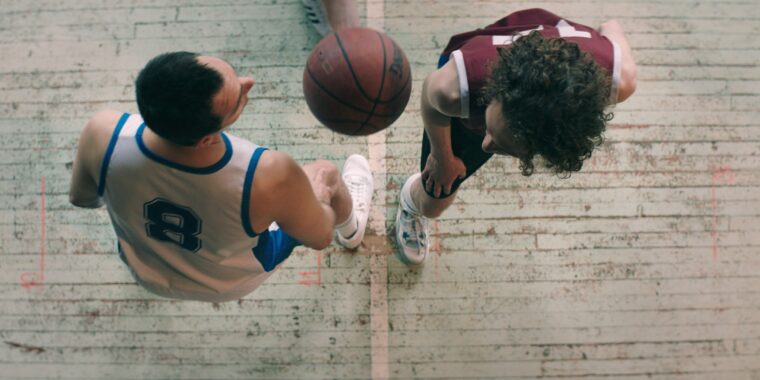Court in History
Interview with Ove Musting (director) and Pille Rünk (producer) for their exciting basketball drama Kalev

How do you create a movie about the biggest sports event in your country’s history? First-time director Ove Musting and producer Pille Rünk took on the challenge of chronicling the rocky path of an Estonian basketball team Kalev, who in a midst of great political and social turmoil won the last USSR Basketball Cup in 1991. The duo talk about the challenges of creating a believable historical period and an authentic basketball team that allow the fictional drama to shine.
Q: Why did you decide to translate this real-life event into a film?
Ove Musting: Pille asked me to make a film about the basketball team – and this is the biggest event in our sports. But it was impossible to make a story because teammates said everything in their life was fine, that there wasn’t a story to tell – only that they won this competition.
Q: How did you approach making a drama film out of real events? Did you take any liberties during the writing process in changing certain events or adjusting them so the film would be more exciting?
OM: I had full freedom to create the film. At the end of the day, it’s not a documentary. It is fiction. I couldn’t take anything from the team. They said, “Life was beautiful. The Russians didn’t hate us, we didn’t hate the Russians. People were polite, and the journalists were good”. And in the articles, I read everything was different. So I had to make up everything.
Q: How was the casting process? Did the actors know how to play basketball?
OM: The casting period was quite long because they all had to learn how to play. Only Reimo Sagor who played Aivar Kuusman was a volleyball player before. Later, we wanted to try to see how it works on a basketball court and then we were forced to change some actors.
Q: How did you create a feeling of a team between the actors?
OM: That is a good question because I was thinking about how to make them feel like a team. I even thought about playing with them. But then I realised that I should keep my distance because I am like the trainer for the whole team. And of course, they’d never played basketball before, so they had a lot in common, like injuries for example. If you have pain with someone who has the same pain, it makes you stronger.
Q: How did you approach planning and the shooting of basketball scenes?
OM: We had to take really small steps and had to choreograph it. So we booked a trainer and we wrote all the plays, bit by bit. With the camera, I wanted to be inside the game. On television, the viewer never sees what happens in the position games. So I wanted to follow the ball.
Q: What was the process of finding the right locations and choosing the costumes?
OM: I was a teenager in the 90s. South Estonia, where I come from, was a big mess in the 90s. And with our production designer we were searching for that time, the late 80s, or the beginning of the 90s. We tried to figure out how it might look and we tried to implement it in every scene, and the same with the costumes.
PR: The problem is that Estonia is pretty new and lots of places are lost. We found some in really remote corners of Estonia. Then we went to Latvia, for a couple of things, where a lot of Soviet architecture is still intact.
Q: Have you been influenced by any sports movies?
OM: I wouldn’t say that. Of course, there are great sports movies. For example, Moneyball. Or Any Given Sunday, which is a made-up story. But I was impressed when Saving Private Ryan was in the cinemas. In the very first scene when the doors of the boats open and all of the rumble happens. I wanted to create the same feeling in the basketball game because the basketball game is always like a battle.
Q: How did the Estonian audience react to the movie?
PR: I haven’t had a bad word so far. It seems the audience likes it. The critics like it. But it’s much better if you have both sides. Because it’s more interesting. There are a couple of questions about the real events and the original stars. These are brought up. But I’m generally surprised by how well-received it was. I’m kind of worried because it should be more balanced.
OM: I was sure that if you play with fire it’s gonna burn you. I thought after the premiere journalists would write really bad words because those who lived back then are still alive and are still working in the newspapers. But they’ve hidden somewhere, o it has been quite positive.
Eliska Soukupova
Amar Komić
© FIPRESCI 2022
